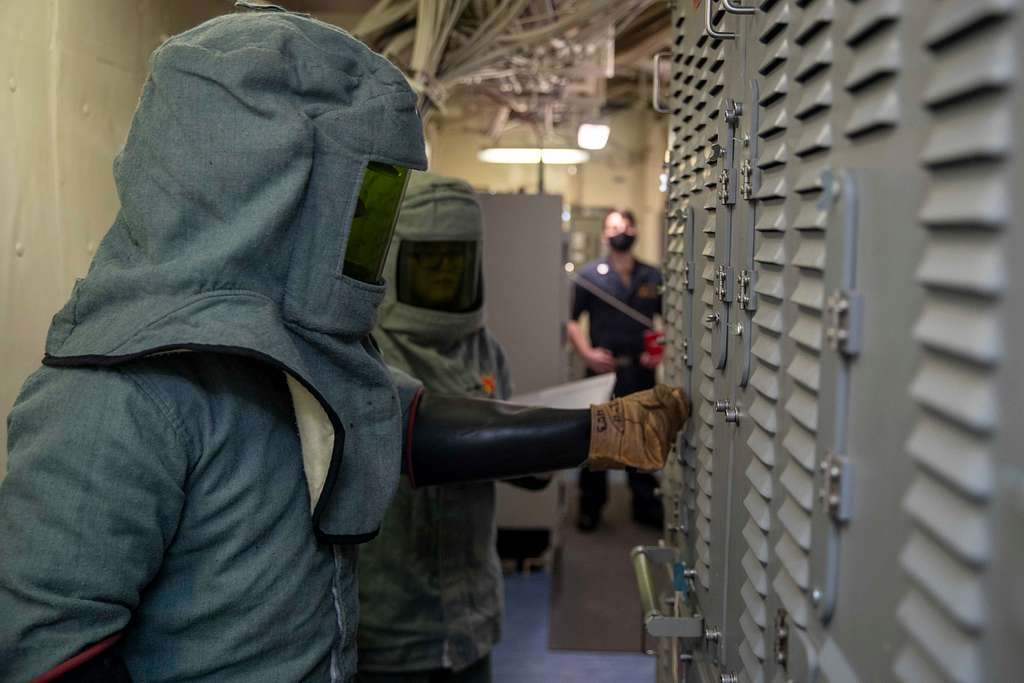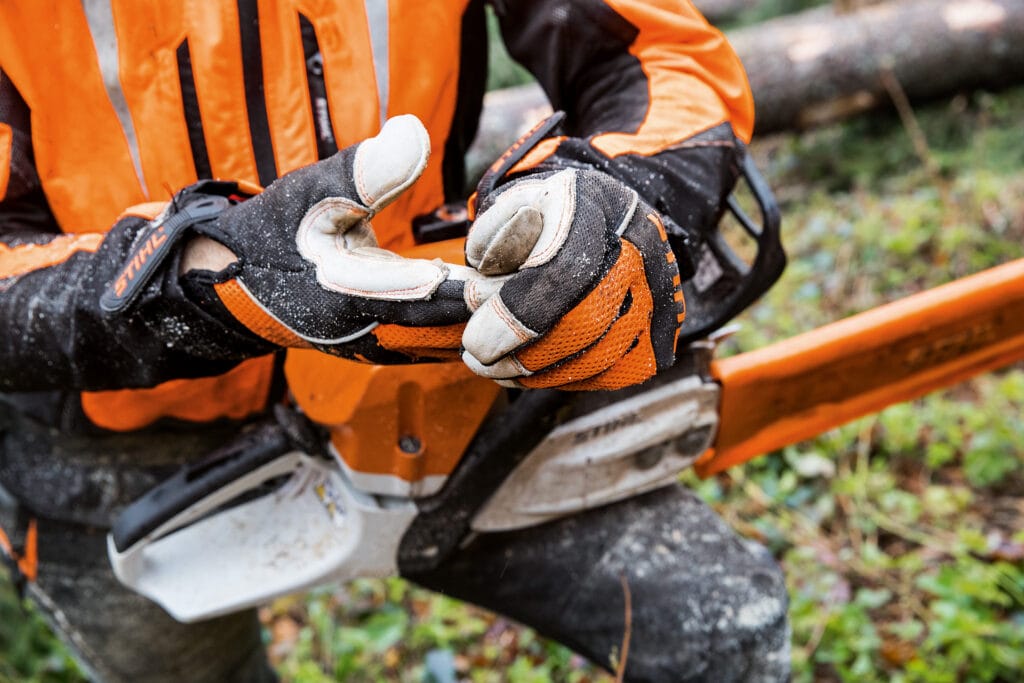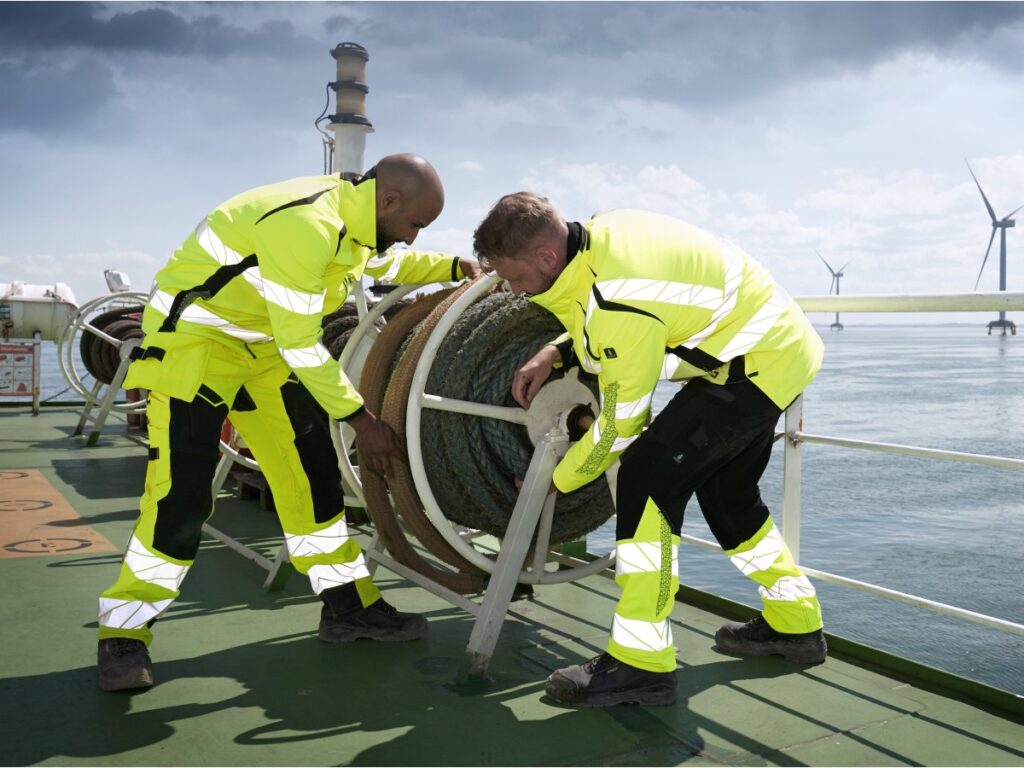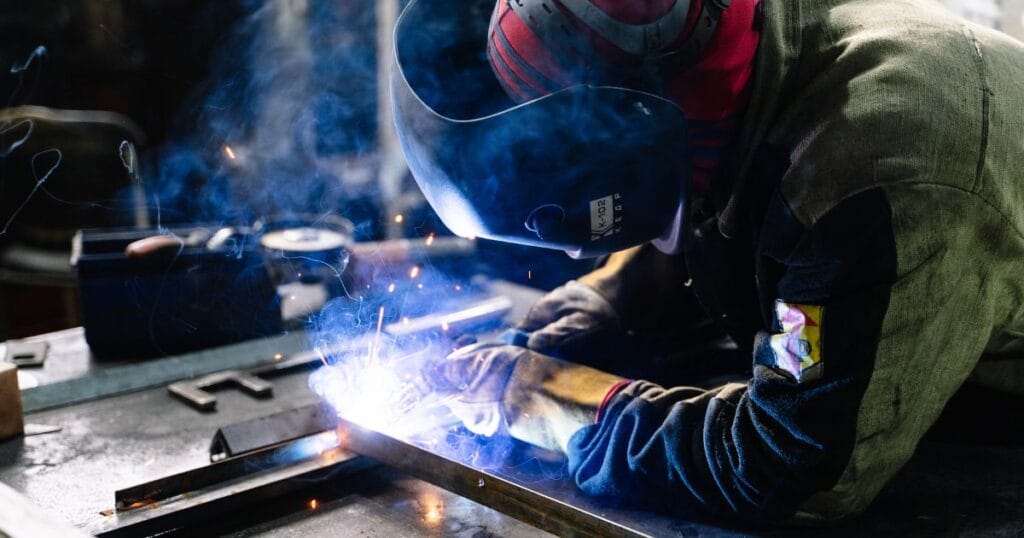
In the world of electrical safety, there’s no compromise—especially when it comes to arc flash. For electricians, maintenance teams, and utility workers, arc-rated clothing is the most critical layer of protection against sudden electrical energy releases.
Arc-rated garments don’t just resist fire—they’re engineered to absorb and block intense thermal energy in milliseconds. Without them, even a brief arc flash can cause life-altering burns or worse.
What Makes Clothing Arc-Rated?
Arc-rated clothing is a special type of flame-resistant (FR) garment tested to withstand the thermal energy generated by an arc flash. It’s designed not only to self-extinguish when exposed to flame, but more importantly, to prevent burn injuries from high-heat electrical blasts.
What makes it arc-rated:
- Fabrics are tested to ASTM F1959 for resistance to arc energy
- They receive a measured Arc Thermal Performance Value (ATPV) or Energy Breakopen Threshold (EBT)
- Garments are labeled with arc rating in calories/cm², so users can match PPE to incident energy levels
Arc-rated clothing must be part of a complete PPE system and is typically worn as the base layer in arc flash zones.
Differences Between FR Clothing and Arc Flash Clothing
Many people confuse “FR” clothing with “Arc-Rated” clothing, but there’s a key difference.
| Type of Clothing | Flame-Resistant (FR) | Arc-Rated (AR) |
|---|---|---|
| Main Function | Resists ignition and self-extinguishes | Protects against arc flash heat and energy |
| Tested For | General flame exposure (e.g., flash fire) | Arc flash energy exposure (cal/cm² rating) |
| Common Use Cases | Oil & gas, welding, foundries | Electrical maintenance, switchgear access |
| Key Standard | ASTM F2302, NFPA 2112 | ASTM F1506, NFPA 70E |
✅ Bottom line: All arc-rated clothing is FR, but not all FR clothing is arc-rated. Make sure what you’re buying is explicitly arc-rated with a labeled ATPV/EBT rating.
ATPV Ratings and Fabric Layers Explained
ATPV (Arc Thermal Performance Value) measures the amount of arc energy (in cal/cm²) a fabric can absorb before the wearer would suffer second-degree burns.
For example:
- ATPV 4 cal/cm² = minimum for Category 1 tasks
- ATPV 8 cal/cm² = suitable for Category 2
- Higher ratings (25+ cal/cm²) = for Category 3 or 4
Layering matters:
Wearing arc-rated garments in multiple layers can significantly increase overall protection. For example, a base layer shirt + coverall system may provide 12–20 cal/cm² protection depending on fabric and configuration.
Tips:
- Never layer non-FR garments under arc gear (they can melt to the skin)
- Garments must cover all exposed skin for full-body protection
- Always check combined ATPV values for layered systems
Shirt, Pants, and Coveralls: What to Choose Based on Task
Arc-rated clothing is available in various configurations depending on work needs, comfort, and protection level.
Choose based on task and environment:
| Task Type | Recommended Garment Type |
|---|---|
| General panel access (CAT 1–2) | Arc-rated shirt + pants (ATPV ≥ 8 cal/cm²) |
| Switchgear operation, MCC work | Full-body coverall or layered system (CAT 2–3) |
| Outdoor substation / CAT 4 tasks | Arc-rated coverall with arc flash coat or jacket (≥ 40 cal/cm²) |
Fit and comfort also matter:
- Garments should be loose-fitting enough to allow an air barrier (adds thermal insulation)
- Moisture-wicking and breathable materials are ideal for long shifts
- Look for gusseted shoulders, reinforced seams, and double-layer collars for durability
Key Standards: ASTM F1506 and NFPA 70E
Two key standards define arc-rated clothing requirements in North America:
🔹 ASTM F1506
This standard outlines performance requirements for textiles used in arc-rated clothing, including:
- Fabric’s ability to self-extinguish
- No melting or dripping
- Labeling with ATPV or EBT value
🔹 NFPA 70E
The NFPA 70E standard defines:
- Electrical safety work practices
- Arc flash boundaries and PPE categories (CAT 1–4)
- Minimum PPE for tasks based on hazard level
- Risk assessment and documentation requirements
For buyers and safety managers, verifying that garments meet both ASTM and NFPA 70E is non-negotiable. Reputable manufacturers will provide test reports and compliance documentation upon request.
Maintenance and Laundering Tips for Arc Clothing
Proper care extends the life and performance of arc-rated garments. Poor maintenance can degrade the fabric’s protective properties.
Washing Guidelines:
- Use mild detergent; avoid bleach, softeners, and starch
- Wash separately from other garments
- Use warm or cold water—not hot
- Tumble dry on low heat or hang dry
Inspection Checklist:
- Look for frayed edges, holes, and worn areas
- Check for faded labels (you must be able to read ATPV rating)
- Inspect closures, seams, and stitching
- Replace if contaminated with oils or flammable chemicals
⚠️ Important: Never wear damaged or contaminated arc-rated gear—it won’t protect you in an arc flash.
Conclusion
Arc-rated clothing is the first and most critical defense for any worker exposed to arc flash hazards. It protects against severe burns, enables safe evacuation, and ensures compliance with regulatory standards.
When sourcing arc flash clothing, make sure you’re choosing gear that is:
- Properly rated and labeled
- Tested to ASTM and NFPA standards
- Comfortable enough for real-world daily wear
- Supported by reliable documentation from your supplier
Need help choosing the right gear for your facility or team? I can help you match garments to hazard levels, tasks, and certification needs—so your crew stays safe, comfortable, and compliant.
📩 Contact: [email protected]
🌐 Visit: www.workwearsolutions.net
Zion Zhang
Recent Posts
 Thermo-Adaptive Fabrics: Dynamic Microclimate Control for Extreme Heat Environments2025年12月8日In high-temperature environments—whether in Middle Eastern […]
Thermo-Adaptive Fabrics: Dynamic Microclimate Control for Extreme Heat Environments2025年12月8日In high-temperature environments—whether in Middle Eastern […] Choosing the Right Fabric Blend by Industry2025年12月6日How CVC, TC, and High-Strength Fiber Blends Shape […]
Choosing the Right Fabric Blend by Industry2025年12月6日How CVC, TC, and High-Strength Fiber Blends Shape […] Functional Fabric Trends 20252025年12月3日Performance, Sustainability, and Smart Innovation Driving […]
Functional Fabric Trends 20252025年12月3日Performance, Sustainability, and Smart Innovation Driving […] Why Global Buyers Are Shifting Toward Lightweight Protection2025年12月2日Hygiene, Comfort, and Safety in a New Era of Performance […]
Why Global Buyers Are Shifting Toward Lightweight Protection2025年12月2日Hygiene, Comfort, and Safety in a New Era of Performance […] Top Workwear Fabric Innovations to Watch in the Next 3 Years2025年12月1日Workwear is entering a new era where materials science, […]
Top Workwear Fabric Innovations to Watch in the Next 3 Years2025年12月1日Workwear is entering a new era where materials science, […] Supplier Opportunity: Selling Tracking-Enabled Workwear as a Service2025年11月27日The Future of Safety, Compliance, and Workforce […]
Supplier Opportunity: Selling Tracking-Enabled Workwear as a Service2025年11月27日The Future of Safety, Compliance, and Workforce […]
CONTACT US
- Feel free to contact us any time. We will get back to you as soon as we can!
- +86-17330061805
